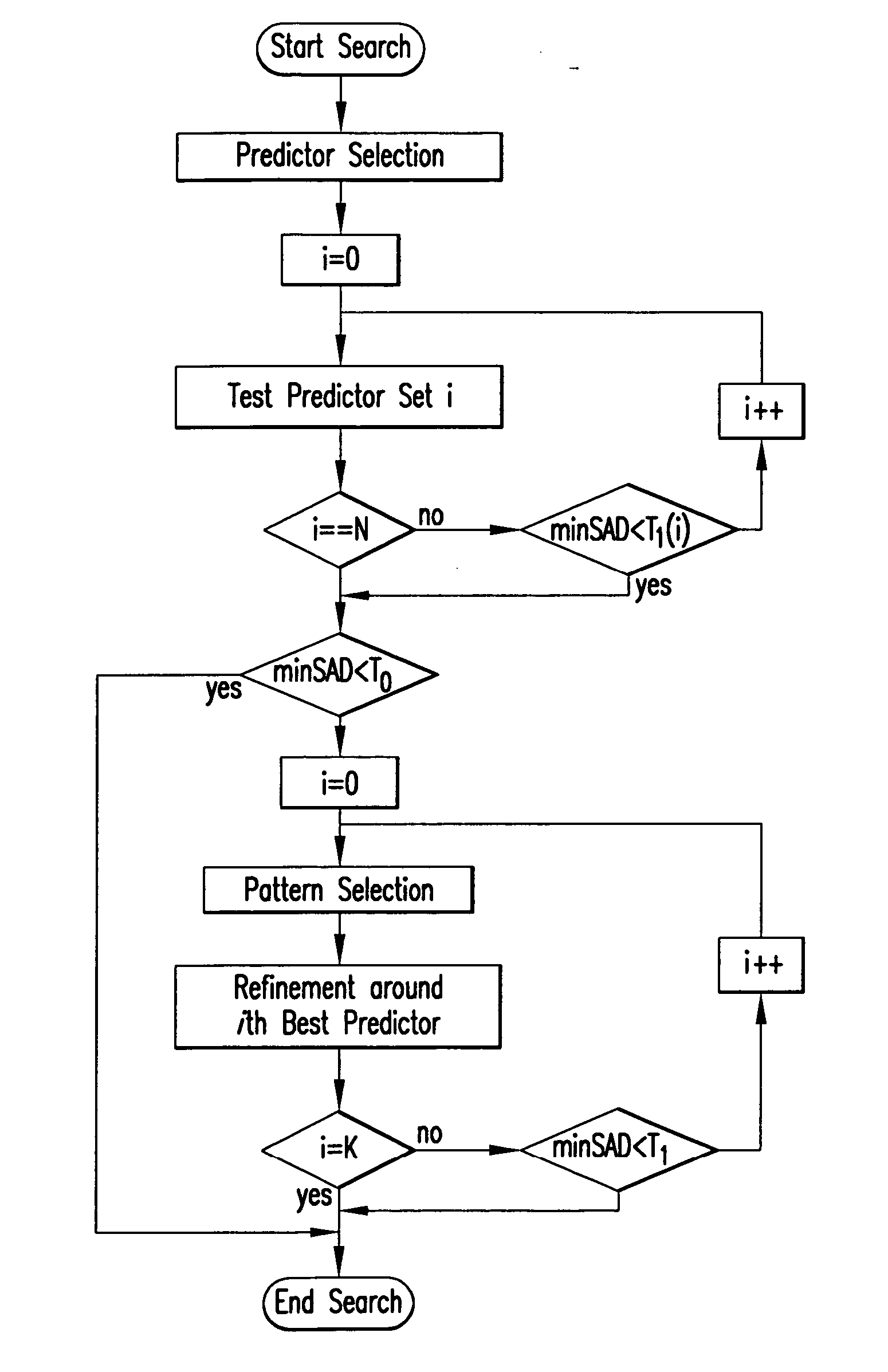Device and method for fast block-matching motion estimation in video encoders
a video encoder and motion estimation technology, applied in the compression field of images, can solve the problem of one of the most computationally complex processes within the video encoder, and achieve the effect of reducing the complexity of the motion estimation process and reducing the performan
- Summary
- Abstract
- Description
- Claims
- Application Information
AI Technical Summary
Benefits of technology
Problems solved by technology
Method used
Image
Examples
Embodiment Construction
[0030]FIG. 11 is a flow diagram of the general scheme for finding redundancies between frames currently undergoing compression and prior frames. This flow diagram shows a process of searching prior frames for redundancies using patterns to be discussed below. The efficiency of the method derives from effective choice of patterns and astute choice of order of search. The method is designed for the earliest termination of a motion estimation search. The key feature of this invention is finding the best pattern subsets to search, the predictors to select given the patterns, and the order of search.
[0031]FIG. 1 shows an overview flow diagram of the motion vector estimation scheme of this invention. The first step 11 is Predictor Selection. In the first iterative substep 12, the system uses a Test Predictor Set selected as is explained below. The “best” set is chosen as the one that minimizes Equation 1 above to find the “best” SAD as defined in Equation 2 above. If the value of SAD is ...
PUM
 Login to View More
Login to View More Abstract
Description
Claims
Application Information
 Login to View More
Login to View More - R&D
- Intellectual Property
- Life Sciences
- Materials
- Tech Scout
- Unparalleled Data Quality
- Higher Quality Content
- 60% Fewer Hallucinations
Browse by: Latest US Patents, China's latest patents, Technical Efficacy Thesaurus, Application Domain, Technology Topic, Popular Technical Reports.
© 2025 PatSnap. All rights reserved.Legal|Privacy policy|Modern Slavery Act Transparency Statement|Sitemap|About US| Contact US: help@patsnap.com



